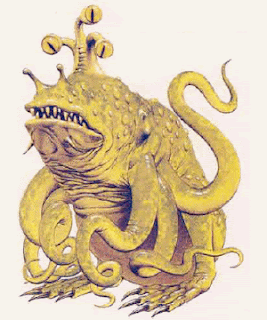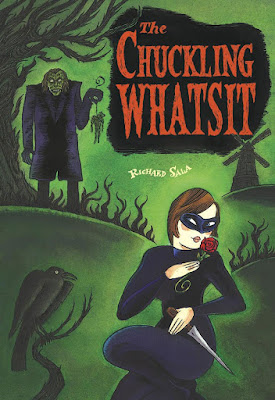Our Land of Azurth 5e game continued last night with the fifth and final session of our adaptation of
X2: Castle Amber. After
a sojourn in France, the party found themselves in Estvyn's tomb. The way to his crypt was blocked at every turn by a guardian monster of some sort. They sneaked past a sleeping azure dragon on a treasure pile in the antechamber. They suffered some burns from the claws of fire crabs in a flaming hallway. They got bowled over by a rock creature (galeb duhr) in the next connecting room.
At this point, they decided to take a long rest, before preceding. A manticore greeted them in the next room. Having a prior disliking for his kind, thanks to their experience with
Mortzengersturm, they attacked with such ferocity he was dead before he got an attack! To be fair, Shade the Ranger did try to get him to back down without a fight.
Next, they were asked to chose between a room full of water and a room full of mud. After fishing with the Waylon the frogling as bait revealed at least a couple of eel hounds lurking, they went with the mud room, where they slugged (and slogged) it out with a mud golem.
Dissonant whisipers ultimately hurt his feelings--to death.
The final room held a barbed devil. Here, Astra's stellar radiant blasts and the Mace of Disruption they had gotten previously really came in handy.
Finally at Estvyn's crypt, they burned the tapestry and broke the curse. The Elf mage thanked his cousin Shade for coming to his rescue. He removed the lunacy curse from Kully and Astra, and unpetrified Dagmar. Finally, the part got a magic item each for their trouble. They were deposited back in the Land of Azurth in front of a now ancient and crumbling House Perilous.




















